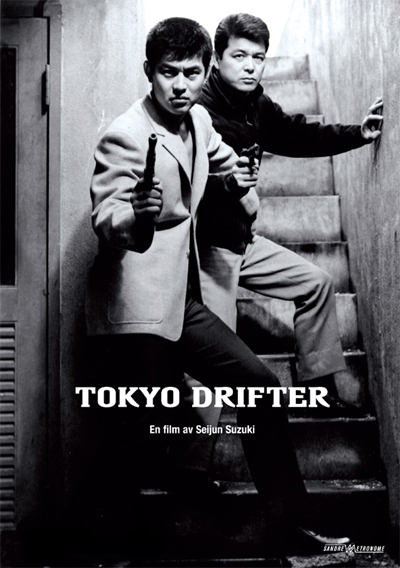The B movie. Using its early definition, a B movie is a film intended to be on the bottom half of a double feature, the first film being the main attraction. The cinematic equivalent of filler, a B movie was made for considerably less money and on a strict schedule of time and in early cases gravitated around genres like the Western, science fiction, horror or crime.
Studio interference was usually minimal during the production of a B film, allowing directors to be much more experimental. Directors were also seen a lot like contractors and rarely wrote the scripts they directed. Typically, directors were rarely allowed to say no to the scripts they were given to direct. One of my favorite B film directors was a little known Japanese filmmaker named Seijin Suzuki. Knowing that he had very little control in the stories he was telling, and that his peers at the studio were being given similar stories, Suzuki made it a point to make his films as loud and vibrant as possible, hoping to stand out. This would eventually get him fired from the studio, which was expecting easy-to-understand simpleminded films. One of his most memorable and certainly is his best is the colorful, violent and off-kilter “Tokyo Drifter,” made in 1966.
“Tokyo Drifter” jerks into action at its first frame. A lone man wearing a suit is walking along tracks in a train yard. He comes to the back of a stopped train where another suited man is waiting. His first line to the waiting man, “If you’re going
Advertisement
to kill me, get it over with” immediately lets us know that we’re in for a thrilling and violent adventure of the strangest kind.
The assertive man’s name is Tetsu, a former Yakuza who’s gone legit with his boss, Kurata. Both of them are pressured into dirty dealings by a former rival Yakuza gang lead by Otsuka. Back against the wall, Tetsu is caught between avoiding violent conflict and remaining straight, and his overwhelming urge to kill. Valuing his duty to his boss above all, he takes the blame for a murder he didn’t commit to clear his boss’s name, choosing to flee Tokyo. The “Tokyo Drifter” later learns that his boss, working with their rival Otsuka, has put a hit on him in order to tie up any loose ends. His loyalty betrayed, Tetsu breaks his nonviolent oath and returns to Tokyo for blood.
“Tokyo Drifter” is a pop song film, a Japanese genre wherein the film is used as a vehicle to promote a popular song. Suzuki, rising above his circumstances, takes this pop song film script and turns “Tokyo Drifter” into one of the most absorbing, in-your-face genre films ever. From its swift cinematography to its pop art-inspired production design to its cool-as-ice vibe, it’s impossible not to see the influence it had on the next generation of filmmakers.
Thankfully, Suzuki’s works have been restored and brought into the public eye thanks to the Criterion Collection and a multitude of contemporary filmmakers paying tribute to him. His rebel spirit as an artist reminds us that all great art should be more than the sum of its parts, rising above the circu

